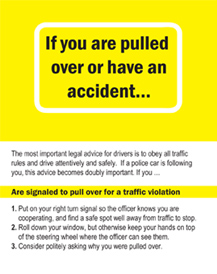Car accidents — Initial evaluation — Factors affecting neck injuries
It is impossible to be completely accurate in identifying all the forces in a particular car accident because so many different variables are involved. Each accident has its own characteristics that can make the difference between a car accident with no injury and a car accident with serious injury. An accurate assessment of the actual forces from a car accident requires the skills of an expert engineer.
However, your personal injury lawyer can make a rough estimate of the potential risk of neck injury from whiplash by examining the following variables:
- The angle of the collision. Was the car hit straight on, from the side, or at some angle? A straight-on impact will generally be less hazardous than a collision from an angle, as the spine may be twisted in off-center impact.
- The speed and size of the rear car. The faster and heavier the rear car is moving, the more severe the forces placed on the occupant in the front car. A large truck going 5 mph can do much more damage than a small car going 20 mph.
- The speed and size of the front car. If the front car is large, there may be less damage, but a small car can experience much higher accelerations in a minor impact.
- Road conditions. Was the road dry, wet, or icy? Was the road surface asphalt or gravel? The amount the car moves after the collision is critical, and the road surface can make a “minor” accident more severe than it at first appears.
- Occupant head position. Was the injured person looking straight forward, or was his or her head turned? A turned head exposes the spine to more complex stresses, resulting in a increased risk of injury.
- Gender. Women are at a much higher risk of developing chronic whiplash pain than are men. Experts have suggested that this increased risk may be due to differences in anatomy or seating position.
- Occupant awareness. It is generally believed that whiplash trauma is less when the person has an opportunity to “brace” himself or herself in the collision, preventing the head from being hyperextended. Bracing of the arms and legs, however, can result in trauma to these areas of the body. A clear picture of what the person did the instant of the collision is imperative, although difficult to ascertain.
- Head restraints. Most people mistakenly believe that the head restraint is a head “rest,” and use it to rest their heads. The restraint should be positioned so that the back of the head touches it. Many adjustable head rests are set too low, so that they act as pivots during hyperextension, causing more injury. One study found that only 10% of head restraints on the road are adjusted correctly. Another common problem is that seats in cars are set back at an angle, and many people drive leaning forward. In this situation, the head can fully hyperextend, even with a head restraint.
- Safety belts. Shoulder belts are very effective at saving lives in auto accidents, but there is some evidence that they can actually cause more damage in a rear end collision. This is because the body is held in place, causing the head to suffer worse hyperflexion. The cervical spine may also undergo a twisting motion from the head restraint, causing a more complex injury. Furthermore, considerable soft-tissue damage in the chest and shoulder can be caused by the force of the body against the shoulder belt.
- Secondary collisions. Did the person’s car hit another object? All forces have an effect on the occupant of the vehicle. A relatively minor collision can be made much more complicated and hazardous if other impacts are involved.
- Direct body impact. Whiplash pain can be accompanied by minor or severe concussions if the head hits an object.
- Loss of consciousness. This can be important, as it indicates possible concussion or severe G forces in the injury.
- Medical history. A history of cervical spine degeneration, a history of headaches, or chronic soft-tissue pain can complicate the clinical picture.
- Pain onset. A study found that patients who reported pain immediately after their accidents were more likely to have pain two years post-injury. It is generally recognized that patients with immediate symptoms are at a higher risk of long-term pain from whiplash.



